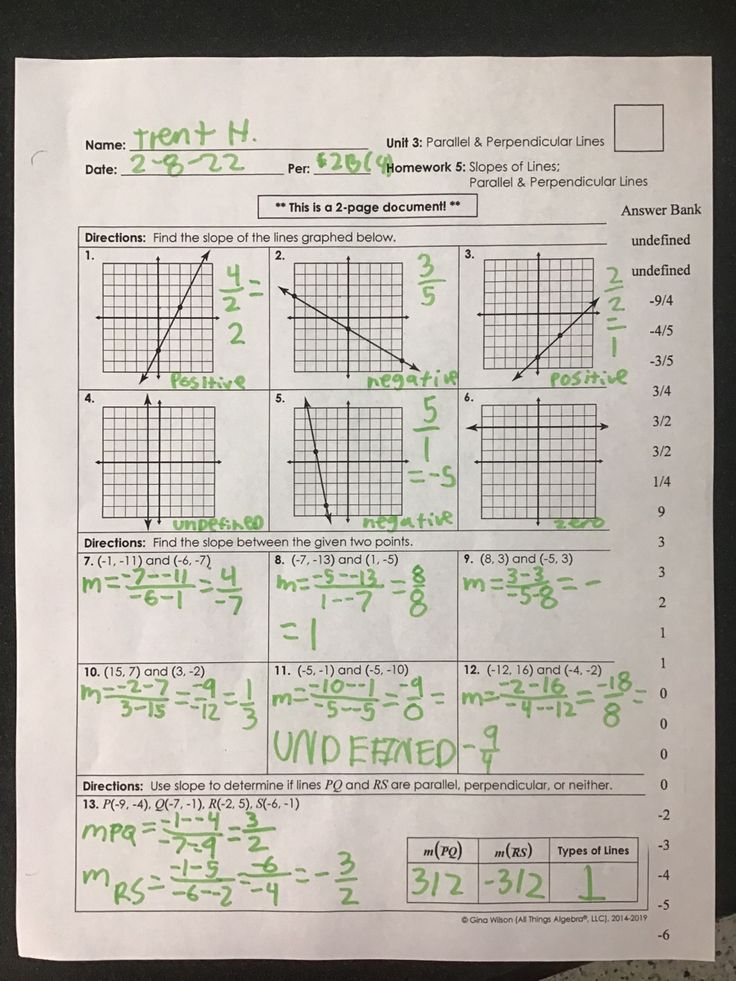Understanding Parallel Lines: Why Their Slopes Are Always Equal

Have you ever wondered why parallel lines always have equal slopes? Whether you're a student tackling geometry problems or a professional using linear equations in real-world applications, understanding this concept is crucial. In this post, we'll break down the relationship between parallel lines and their slopes, making it easy to grasp and apply. From the basics of slope definition to practical examples, you'll gain a solid foundation in this key mathematical principle. Let’s dive in! (parallel lines, slope definition, geometry basics)
What Are Parallel Lines?

Parallel lines are lines in a plane that never intersect, no matter how far they extend. They maintain a constant distance between them and are often visualized as railroad tracks or opposite sides of a rectangle. In mathematical terms, parallel lines have the same slope, which is a measure of their steepness and direction. (parallel lines, slope definition, geometry basics)
Understanding Slope

The slope of a line, often denoted as “m,” is calculated as the ratio of the vertical change (rise) to the horizontal change (run) between two points on the line. Mathematically, it’s expressed as:
m = rise / run
This value determines whether a line tilts upward, downward, or remains horizontal. For parallel lines, this ratio is always the same, ensuring they never meet. (slope definition, rise over run, linear equations)
Why Do Parallel Lines Have Equal Slopes?

The reason parallel lines have equal slopes lies in their definition. Since they never intersect, their angles of inclination relative to the horizontal axis must be identical. This consistency in angle results in the same slope value. For example, if two lines both have a slope of 2, they will rise 2 units for every 1 unit they run horizontally, ensuring they remain parallel. (parallel lines, equal slopes, geometry principles)
Practical Applications of Parallel Lines and Slopes

Understanding parallel lines and their slopes isn’t just for math class—it has real-world applications too. Here are a few examples:
- Architecture: Ensuring walls are parallel for structural stability.
- Engineering: Designing roads or bridges with consistent slopes.
- Graphics Design: Aligning elements in a layout for visual harmony.
Mastering this concept can enhance your problem-solving skills across various fields. (practical applications, architecture, engineering)
How to Identify Parallel Lines

Identifying parallel lines is straightforward if you know their slopes. Follow these steps:
- Calculate the slope of each line using the formula m = rise / run.
- Compare the slopes. If they are equal, the lines are parallel.
📌 Note: Vertical lines are an exception—they have undefined slopes but are still considered parallel if they never intersect. (identify parallel lines, slope calculation, vertical lines)
Common Mistakes to Avoid
When working with parallel lines, avoid these pitfalls:
- Confusing parallel lines with intersecting or perpendicular lines.
- Forgetting that vertical lines have undefined slopes.
- Miscalculating the rise or run when determining slope.
Staying mindful of these errors will help you apply the concept accurately. (common mistakes, perpendicular lines, slope calculation)
In summary, parallel lines always have equal slopes because their angles of inclination are identical, ensuring they never intersect. By understanding slope calculation and its significance, you can identify parallel lines with ease and apply this knowledge in both academic and real-world scenarios. Whether you're studying geometry or working on a design project, this concept is a valuable tool in your mathematical toolkit. (parallel lines, equal slopes, geometry basics)
Quick Checklist for Parallel Lines and Slopes
- Calculate the slope of each line using m = rise / run.
- Compare slopes to determine if lines are parallel.
- Remember that vertical lines have undefined slopes but can still be parallel.
- Apply this knowledge in practical scenarios like architecture or engineering.
What is the slope of a parallel line?
+
Parallel lines always have the same slope, meaning their “m” values are equal. (slope definition, parallel lines)
Can parallel lines have different slopes?
+
No, parallel lines must have equal slopes to ensure they never intersect. (parallel lines, equal slopes)
How do you find the slope of a line?
+
Use the formula m = rise / run, where “rise” is the vertical change and “run” is the horizontal change. (slope calculation, rise over run)
Are vertical lines parallel?
+
Yes, vertical lines are parallel if they never intersect, though their slopes are undefined. (vertical lines, parallel lines)


